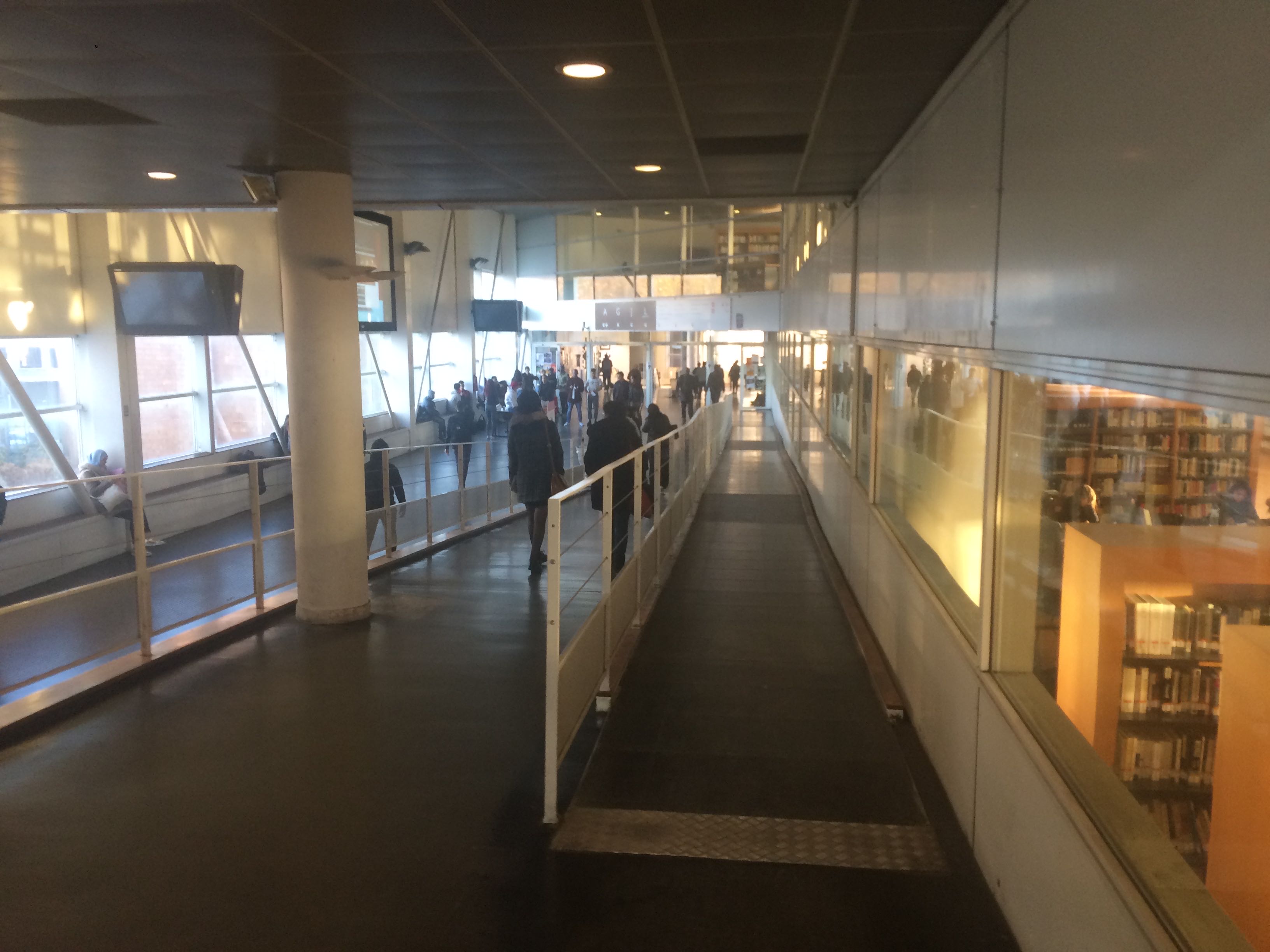We can begin to comprehend dominant subjects’ experience in this site by exploring the path to the Metro, which was the easiest way to reach the campus from Paris. The University of Paris 8 was literally at the end of the line. A metro line called la treize, the 13: identified in the warrens of Parisian public transit by a sky-blue circle, it came to an end right across the street from campus. Near the north border of Paris proper, the line split apart at a station helpfully called La Fourche, the fork, and if you were going to campus, you acclimatized to the rhythm of a certain announcement always muttered with monotonous optimism by the train crew: Attention, ce train est en direction de Saint-Denis Université, attention, this train is going to Saint Denis Université. The equipment was worn out, and quite often the train was overcrowded to the point of chaos.
As the train went north past the city limits, you could recognize its entry into Saint-Denis by an odor of sulphur perpetually lodged in the tunnel at a certain spot. You passed beneath the pedestrian city center of Saint-Denis that we saw earlier, the train emptying out as you neared the last stop. One day, leaving the metro platform, I discovered that I was just behind Stéphane Douailler, the senior philosophy professor who had first welcomed me to the department. He had thinning gray hair, wire glasses and a keen face. I thought about saying good morning, but he was in motion and looked rushed. I set off behind him towards the department offices.

There was only one logical way to get there. We left the shadow of the peaked roof of the metro station, came across the gray asphalt of the plaza, across the low curbs of the almost nameless street that ran past the campus, up to the university’s main entrance with its featureless outer gates set beneath the library windows. Then through a courtyard and past a security post in a dim lobby and up the escalator, which for once was not broken. Out into a wide passageway that crossed over the Avenue de Stalingrad, with a view to the east through wide windows, leaving the passageway bright with the day. Douailler was walking as fast as he could, stooping a little, barely looking at his surroundings or not seeing them at all, perhaps lost in thought. We crossed the passageway and descended a second escalator, passing the bookseller who set up shop most mornings in the atrium. Through swinging doors and into Building A, the original building built when the university was forced out of its original Vincennes campus in 1980. We ignored the claustrophobic low ceilings, the bedraggled tiles, the dirty fluorescent light. Turning the corner away from the coffee shop, we passed a wide staircase leading up to a decrepit balcony, and then the bulletin boards with fraying posters for the Union of Communist Students. Finally we turned down a side hall and into the Department.

During my research stint in 2009–11, Douailler was one of the professors who “kept the Department going,” doing far more than his share of the work. He had single-handedly written a report for the Ministry listing four years of everyone’s research activities. He had a devilish capacity, I was told, for institutional invention, for drawing up new international exchange programs, for being pedagogical with the students. I often saw him teaching the Sophists, one of his specialties, or mediating between radicals and pragmatists. He invited his students to drop off their papers last-minute in his Paris apartment, if that helped them. One day I saw him complain that he was worn out from all the administrative work. Je n’en peux plus, I can’t take it. He looked worn. He was approaching the mandatory retirement age.
He has since retired, but at the time his retirement was hard to imagine. Where would he be without his institutional life? someone asked. He was worn out, and yet it sticks in my head how avidly he crossed the campus hallways that morning, how little he noticed the familiar surroundings, how lost he seemed to be in institutional concerns. How eager he seemed to be to get back to the scene of the institutional action, even though his institution was arguably at the end of the line. He worried that the Department might disappear, someone mentioned. Yet that day, his very pace seemed to encode structural optimism about the institution. The habitus and its bodily routines themselves become symptoms of institutional investment. This investment became invisible, like the invisibility of old professors whose social characteristics let them walk through these corridors almost without seeing. The building was built for them to teach in, and it remained theirs even though in its fluxes of mass occupancy it was almost no one’s.